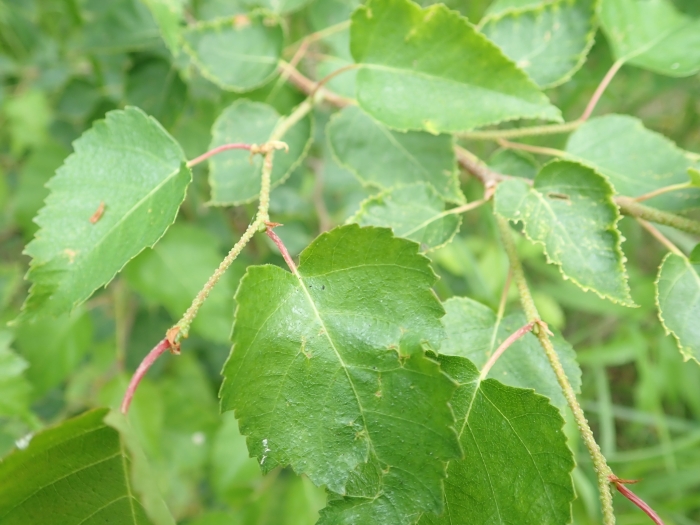Asian White Birch
(Betula platyphylla)
Asian White Birch (Betula platyphylla)
/
/

Bev McBride
Public Domain




















































Estimated Native Range
Summary
Asian White Birch is appreciated for its distinctive bark, which provides visual interest in the landscape throughout the year. It is used in ornamental plantings, as a focal point in gardens, and for naturalizing in larger landscapes. It is relatively easy to grow, requiring full sun to part shade, and prefers moist, well-drained soils. While it can tolerate a range of soil types, it does best in slightly acidic conditions. Gardeners should be aware that this birch can be susceptible to the bronze birch borer and birch leafminer, and it may require preventive care to maintain its health.CC BY-SA 4.0
Plant Description
- Plant Type: Tree
- Height: 30-40 feet
- Width: 15-25 feet
- Growth Rate: Rapid
- Flower Color: N/A
- Flowering Season: Spring
- Leaf Retention: Deciduous
Growth Requirements
- Sun: Full Sun, Part Shade
- Water: Medium
- Drainage: Fast, Medium
Common Uses
Bank Stabilization, Bee Garden, Bird Garden, Butterfly Garden, Deer Resistant, Drought Tolerant, Low Maintenance, Rabbit Resistant
Natural Habitat
Mixed forests in Northeast Asia, often on moist, well-drained soils along riverbanks and mountain slopes
Other Names
Common Names: Manchurian Birch , Paper Birch , Resin Birch , Alaska Birch , Alaska Paper Birch , Japanese White Birch , Manchurisk Björk , Bai Hua , Shira-Kaba , Shira-Kanba
Scientific Names: Betula platyphylla , Betula platyphylla var. japonica , Betula neoalaskana , Betula pendula subsp. mandshurica , Betula mandshurica , Betula resinifera , Betula papyrifera var. humilis , Betula tauschii , Betula alaskana , Betula platyphylla var. kamtschatica
GBIF Accepted Name: Betula pendula subsp. mandshurica (Regel) Ashburner & McAll.